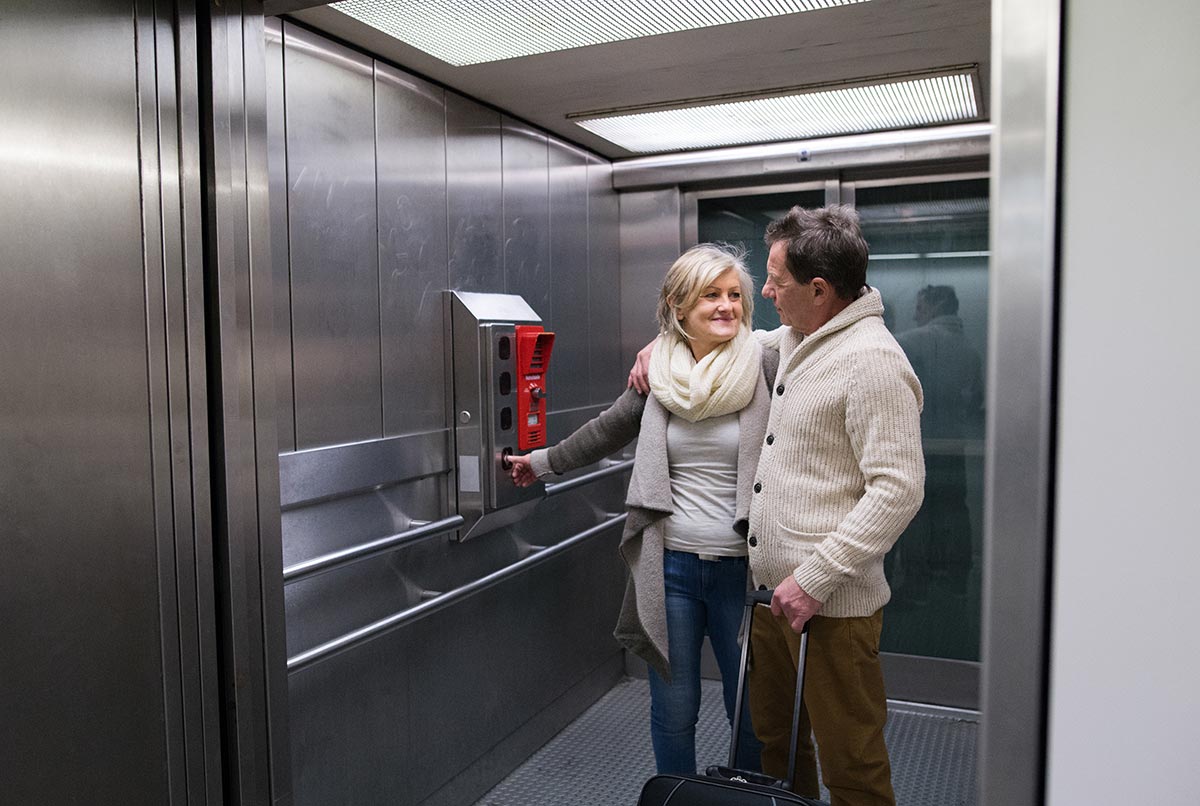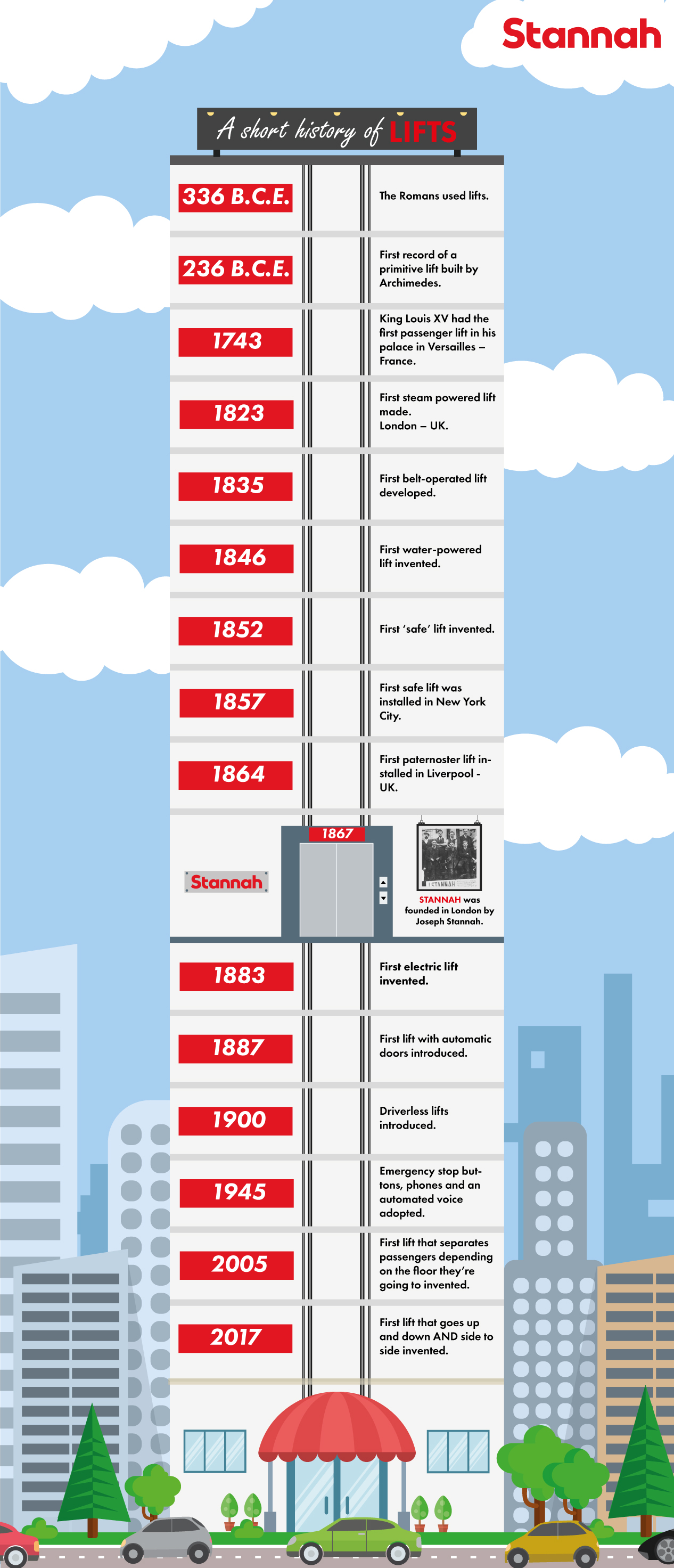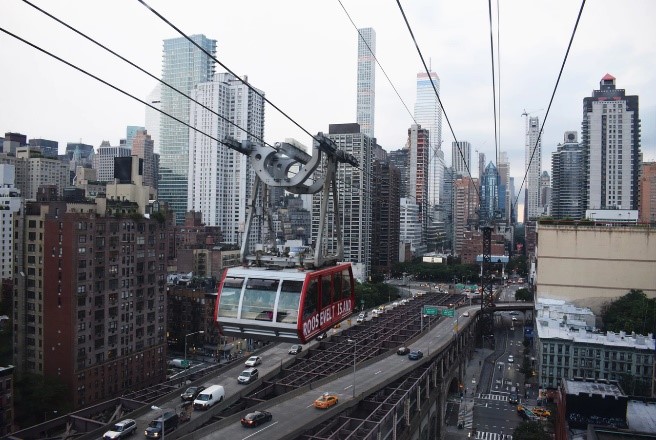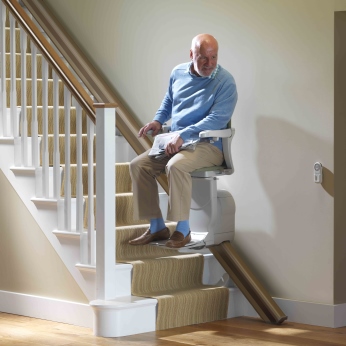Moving on up: Types of elevators and all kinds of uplifting appliances
How many devices can you think of that take us higher? Have you ever stopped to think about how they affect our everyday lives?

Table of contents
Passenger elevators
Escalators
Moving sidewalks
Aerial Tramways
Stairlifts
When you think about it, there are so many appliances we use to move vertically! Whether it’s the escalator at the shopping mall, the moving sidewalk at the airport or the aerial tramway you found on vacation, how often do you stop and think about how creative humans are? How we’re always solving problems and making it that much easier to get around?
We want to celebrate the ingenuity of humanity by reflecting on how these everyday appliances make life that much easier. But it’s not just about how they help us today. They’ve played a hugely important role in shaping the way our society has grown and changed!
Passenger elevators have made living in a skyscraper possible. After all, would you live or work on the 32nd floor if the building didn’t have an elevator? They’re the reason we can build the cities we’re used to seeing today. Imagine what the world would be like without skyscrapers – New York, Dubai and Hong Kong would be flat. 20th century developments and the world we know today would be completely different. Cities could never be as densely populated as they are today. It might sound like a good thing until you think of what we would lose. For one, with denser populations more minds meet, leading to more development, creativity and ingenuity.
And lifting technology continues to change the way we live our lives. Outdoor escalators, elevators, moving sidewalks and aerial tramways all help make cities more accessible. As we move towards a more age-friendly era, it’s important to celebrate how cities are becoming more age-friendly. Barriers are being broken down and it’s all thanks to the amazing technology we’ve developed over the last 2.5 thousand years (okay, more like couple of hundred years).
Passenger elevators
The idea of an elevator has been around a long time. People have always needed to transport heavy objects upwards, and found creative ways of doing so. In fact, there are records of elevators being used as far back as the Romans! It just took a long time for us to develop the idea, making them safe for everyday use. From manually hoisted elevators, to the development of hydraulic elevators in 1846 there was a huge leap in engineering. However, the way our cities have grown upwards as well as outwards is thanks to two very important factors:
- Hydraulic (water-powered) elevators had a major problem. To work, a pit needed to be dug that was as deep as the elevator was high. This made it impossible to use in big cities.
- The cable systems that didn’t need pits were dangerous. Often the cables attached to the elevators broke, sending the elevator plummeting down the building and killing the passengers inside it.
It was in finding the solution to these problems that elevators became an everyday appliance! And the man who achieved this feat in engineering was Elisha Otis. He developed a safety system for cable elevators that would stop an elevator from falling if the cable snapped, changing the way we build forever.
The whole detailed history of elevators is available at Gizmodo (Upton, 2014), but here’s a timeline to break down the main events:

Looking to the future:
If we really think about it, elevators have led the way in technology and engineering for over 100 years and they’re not showing any signs of slowing down with taller, faster elevators emerging every year.
However, as well as the benefits they bring themselves, they might also pave the way for other technologies in other areas. Think of it this way – 118 years ago, people were terrified of driverless elevators. It took over 50 years for people to become comfortable using them and now, with the development of driverless cars, people are terrified of those too!
Think how much safer elevators became when technology allowed them to go driverless. There was no longer room for human error. Automated cars meant that the elevator always stopped in the right place for each floor, and buffered doors made sure no one could jump in dangerously at the last minute. Could driverless cars give us the same added safety? And have we learned from our unfounded fear of driverless elevators?
Did you know:
The world’s tallest outdoor elevator is in China? It’s called the Bailong Elevator and is 326 m (1,070 ft) high.
Escalators
Like passenger elevators, escalators have been around a long time – since the ancient Egyptians to be precise. Other mechanisms just didn’t work to transport the amount of weight they needed in order to build the pyramids. In fact, the ingenious method the ancient Egyptians came up with to transport huge stone cubes is one of the basic principles still used in today’s escalators. This basic principle is rolling wheels beneath the transported weight.

Although the idea of a moving stairway has been around for centuries, it wasn’t until:
1859 that the first patent for anything of the sort was granted.
1896 the first working escalator was created as a novelty ride.
1897 the model was re-designed and given the name we all know today: “escalator”.
1920s the first metal escalators were made.
When we think of escalators, we may think of shopping malls or train stations. However, they are being seen more and more in cities, to help people get around. Hong Kong has the longest outdoor covered escalator system in the world, helping speed up the commutes of its hundreds of thousands of inhabitants. Escalators can make climbing steep hills effortless, allowing people to save their energy for more important things. Other cities that have impressive escalator systems are:
- Los Angeles – USA
- Barcelona – Spain (escalators lead up to the city’s famous park, Park Guell)
- Medellin – Colombia (28-story outdoor escalators)
Did you know:
Macy’s Herald Square (in New York) was the first public building in the world to have a modern-day escalator in 1902? The original was replaced in the 1920s, but the replacement is made of wood and is STILL THERE!
Moving sidewalks
Now, the development of escalators was reasonably quick. From the first patent for the technology to widespread usage, there was only a delay of about 50 years. Considering moving sidewalks use exactly the same technology, wouldn’t you have thought they’d have been as popular? Unlike escalators, however, they just didn’t seem as useful. This is what the timeline for moving sidewalks looks like:

1871 First patent for a ‘moving walkway’ granted.
1893 The first moving sidewalk debuted in Chicago, Illinois, in the United States.
1954 First commercial moving walkway in the US installed.
1958 The first moving walkway in an airport was installed in Texas.
Since 1958, moving sidewalks have slowly become the norm in airports. Lots of people have to walk long distances in short times, so airports are the perfect place to speed up some of that walking and allow people to save some of their energy. Since the 1980s, designers have focused on trying to increase the speed of moving sidewalks, but this has resulted in a lot of accidents, especially for people getting on and off the walkways.
In recent years, inclined moving sidewalks have come into use in supermarkets, as they allow for the transportation of shopping trolleys between different levels. This has allowed supermarkets to grow, stretching over many different levels. Think just how much more can be fit into a 3-floor supermarket than one built on one floor – customers can get more in one place, and supermarkets can expand their produce. It’s a win-win, and all thanks to moving sidewalks.
Other places where moving sidewalks have become common is museums, for example the Tower of London in the UK. The moving sidewalk takes you past the crown jewels, making sure you see everything, but that everyone gets a fair turn for their look.
Now that people have seen how useful they are, they’re springing up everywhere, from train stations to theme parks and even sometimes in aquariums, in fact:
Did you know?
Ripley’s Aquarium, of Canada has a moving walkway in a glass tunnel that takes you through a shark tank? It’s 315 feet long!
Aerial Tramways
From moving sidewalks to aerial tramways, it seems like quite a leap. However, while escalators and moving sidewalks were being built for cities, other technology was developing in the mountains. Systems like the aerial tramways we see today were used in mines, to transport material, and then workers. However, in 1907 the first aerial tramway was built in Spain, to get to the top of a mountain. Other mountainous countries quickly followed suit, with aerial tramways being built in Austria, Germany and Switzerland (Aerial tramway, Wikipedia).

Nowadays, aerial tramways are used for lots of different reasons. However, they may be built for one purpose and gain a whole new one through use. Here are three great ways they’re being used to help us get around:
Aerial tramways for accessibility
When we think of aerial tramways, we think of mountains. After all, most of the first aerial tramways were built to transport people to the tops of mountains. Cheaper than building train tracks, they provided a safe way for people to reach new heights and avoid dangerous falls (like on Mount Hua, a 1,997-metre-tall mountain in China). Using aerial tramways for accessibility means the breath-taking vistas can be reached effortlessly, and are available to all.

Aerial tramways for the view
However, although they certainly have their uses in the mountains, aerial tramways also have their uses in cities. They have become a fantastic way to get amazing views of the world’s biggest cities. The Bondinho was built in Rio de Janeiro in 1912 to allow for easier access to the top of the Sugarloaf Mountain. Although it was designed for practical reasons, it offers an exhilarating view over the city, and has since become a huge tourist attraction in itself. In recent years, many cities have followed suit, including London, where a aerial tramway was opened in 2012 just before the Olympic Games were hosted there.
Did you know:
The Jasper tramway in Jasper, Alberta is the longest aerial tram in Canada? It offers incredible views of Mt. Robson, the highest peak in the Canadian Rockies.

Aerial tramways for convenience
They’ve also become a handy tool for commuters, lifting them above the traffic and giving them a beautiful view along the way. They’re a relatively cheap option compared to building rail lines or metro stations so have sprung up in many cities in recent years. The Roosevelt Island aerial tram (New York City, USA) was the first commuter air tramway in North America, having opened in 1976. Mi Teleferico serves the same purpose in La Paz, Bolivia as does the Caracas Metrocable in Venezuela.

All these developments are happening all the time. We’re constantly being made aware of technological developments with phones and computers and robots, but who’s talking about the amazing way in which we’re using lifting technology in cities? Vertical movement is the way forward when it comes to cities of the future, and the future is almost upon us.
But what about private use? How stairlifts are keeping you moving in your own home.
Moving large numbers of people around cities is important, but keeping you moving in your own home is just as much of a consideration. Getting a stairlift installed could mean you save your energy for the things that really matter, as you’re transported up and down your stairs easily. Stairlifts make your home safer.
Did you know:
Some of the first commercially produced stairlifts were advertised and sold in the United States as far back as the 1920s?
However, historians have found that there is a reference to a chair lift used by King Henry VIII of England in the 16th century. The King, who had fallen from a horse, used a giant chair that carried him down the stairs at his London residence, through a system of ropes.
In the 20th century, various companies were engaged in the construction of lift chairs, and Stannah was the first to manufacture them in the United Kingdom. Stannah stairlifts are still manufactured today in our new factory, located in Andover, United Kingdom.

Stairlift featured in “Witness for the Prosecution”, by Billy Wilder, in 1957, based on the novel by Agatha Christie.
Modern stairlifts, such as those made by Stannah, have folding functions so they do not obstruct the stairs for people who want to continue using the stairs as normal.

Stannah, at the forefront of the chairs, stairlifts, with over 40 years of experience.
So there you have it! Elevators have actually been around for a long time. Every day, we use lifts or elevators, regardless of whether we have mobility issues. They make life easier for everyone and mean we can continue to build upwards without worrying about being restricted by stairs or heights!
Further reading:
Aerial Tramways. Wikipedia. 2017. Retrieved from: https://en.wikipedia.org/wiki/Aerial_tramway
Upton, E. 2014. Who Invented the Elevator? Gizmodo. Retrieved from: https://gizmodo.com/who-invented-the-elevator-1570745196

 USA
USA